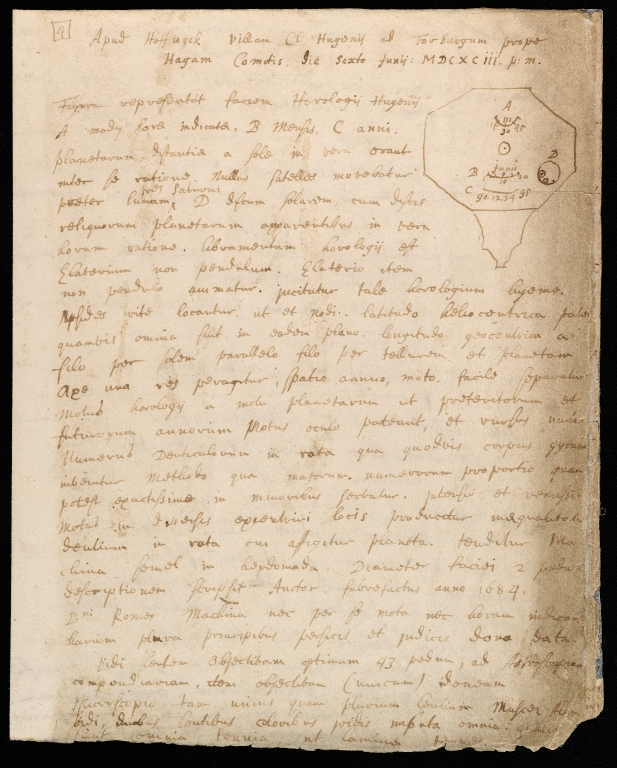Mathematics
Found in 198 Collections and/or Records:
Notata Math. Nov: 1702, November 1702
This small page appears to go with item 61(2), Newton's refraction table. 1702 was the year that the Astronomiae came out, by which time Gregory was also well under way with his ancient geometers project.
Notata phys: et math: London ..., 1697
Notes on scientific matters, many of them discussed with Newton, such as why the brachistochrone curve is a cycloid and how a musical chord can have the figure of a catenaria, and a record of curiosities, such as the toads of Surinam, who breed their young on their backs, and floors that can be secured made with dovetails instead of nails.
Notata phys: et math: London ..., 1698-1705
Almost certainly a latter part of Gregory's item 80: 'Notata Phys: et Math: D.G. Lond: 25 June &c 1698'. This covers cone sections, elements of Euclid, errata in a Halley treatment of comets in his own Apollonius project, and a jotting on Scottish history bibliography.
Notes on priority, 1707
This small slip bears what appears to be ammunition in Gregory's defence of his uncle James Gregorie against old charges of plagiarism. The confusing reference to "Actis Phil. Septemb. & Decemb. 1797" is a slip of the pen. The material appeared in the Acta of 1707.
Nova Methodus Tangentes Curvarum ... per D.T., s.d.
An undated treatment of tangents by 'D.T.', in the same hand as item 91.
Observ: Eclipsos Lunaris Oxon 19 Octr 1697 et [Mercury] in [the Sun] 24 Oct 1697, October 1697, with 2 apparently attached documents from 17041693

Observata et dicta apud D. Hugenium, 06 June 1693
Notes of a conversation in Holland with Christian Huygens, concerning an 'horologium' to show hours, months, years, and planetary positions. More general mention of the work of numerous other scientists: Notably, Huygens disputes the notion of John Bernoulli (James Bernoulli's younger brother) that the curve of an inflated sail is part-catenary and part-circle, and warns that Newton ought not to be 'deflected' into theology or chemistry.

